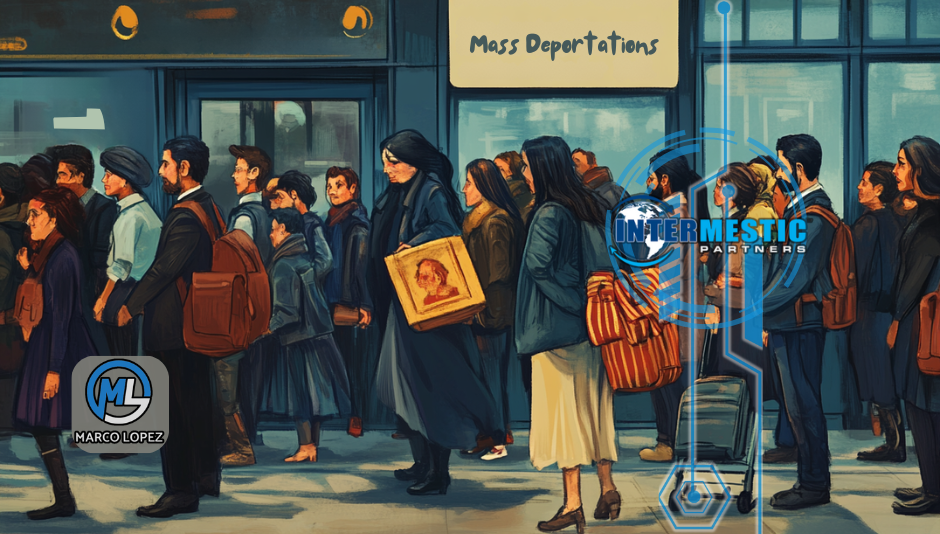The Economic Fallout of Mass Deportations: What the U.S. Stands to Lose
- Marco Lopez

- May 19
- 2 min read

A Costly Crackdown
Mass deportation is more than a political talking point—it’s an economic risk. With over 9 million undocumented immigrants in the U.S., a policy that targets them for removal would ripple across industries, communities, and the economy at large.
As someone who has worked at the front lines of U.S. immigration policy—as a border mayor, Chief of Staff at U.S. Customs and Border Protection, and now CEO of Intermestic Partners—I know the economic reality behind the rhetoric. Immigration, in its many forms, is deeply tied to the vitality of the American economy.
What Is Mass Deportation?
Mass deportation refers to the large-scale expulsion of people, typically those without legal immigration status. Historically, it’s been used during wartime or political upheaval—but today, it’s largely focused on undocumented laborers who fuel core sectors of the U.S. economy.
Immediate Economic Impact
The first shock would hit the labor market:
🛠️ Construction, 🧺 hospitality, and 🌾 agriculture would lose thousands of workers overnight
⚠️ Supply chains would stall, prices would rise, and productivity would plummet
🏙️ Local economies in immigrant-heavy regions would shrink due to lower spending
Long-Term Economic Risks
Beyond the immediate damage, mass deportations could:
Stunt entrepreneurship (immigrants start businesses at higher rates than U.S.-born citizens)
Shrink the tax base, affecting local and federal budgets
Erode innovation, especially in tech and healthcare sectors that thrive on immigrant talent
A 2017 report by the National Academies found that immigrants contribute over $2 trillion to the U.S. GDP annually.
Why Immigrants Matter Economically
Immigrants pay taxes and fund public services
They take jobs many Americans won’t—and keep prices low for consumers
In agriculture, up to 70% of workers are undocumented
They drive consumption, start small businesses, and fill critical skill gaps
What History Tells Us
🇪🇸 Spain reversed its deportation stance in the early 2000s after severe labor shortages in construction and farming
📉 Global examples show a consistent pattern: deportation disrupts, not strengthens, economies
Arguments For and Against
✅ Proponents say:
Jobs will open for native-born workers
Public service spending will drop
Enforcement of the law sends a clear message
❌ But the data suggests:
Native workers often don’t fill those same jobs
Wage impacts are mixed or negligible
Economic contraction offsets potential savings
Best- and Worst-Case Scenarios
Best Case:
Deported jobs are replaced by U.S. citizens, wages rise, and local governments save on services.
Worst Case:
Labor shortages devastate key sectors, inflation spikes, innovation drops, and regional economies collapse under the weight of lost productivity.
At Intermestic Partners, we work with businesses and communities trying to adapt to these policy whiplashes—preparing for disruption while advocating for smarter, more sustainable immigration reform.
Conclusion: More Harm Than Help
Mass deportations would not only strain families and communities—they’d strain the economy. From shrinking GDP to stalling innovation, the long-term price is too high.
Immigration policy must be humane, but it must also be economically sound. That means balancing border enforcement with workforce reality.
Want to learn how policy and economic strategy intersect in this space? Connect with Intermestic Partners. Let’s build policies that grow—not gut—our economy.
.png)




Comments